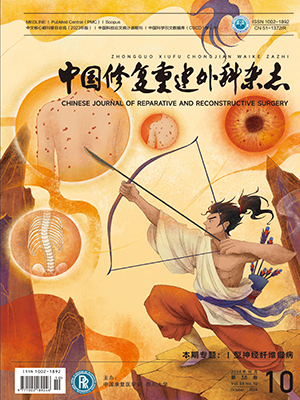| 1. |
Koulaxouzidis G, Reutter W, Hildebrandt H, et al. In vivo stimulation of early peripheral axon regeneration by N-propionylmannosamine in the presence of polysialyltransferase ST8SIA2. J Neural Transm (Vienna), 2015, 122(9): 1211-1219.
|
| 2. |
Oh SH, Kang JG, Kim TH, et al. Enhanced peripheral nerve regeneration through asymmetrically porous nerve guide conduit with nerve growth factor gradient. J Biomed Mater Res A, 2018, 106(1): 52-64.
|
| 3. |
Umeda K, Negishi M, Katoh H. RasGRF1 mediates brain-derived neurotrophic factor-induced axonal growth in primary cultured cortical neurons. Biochem Biophys Rep, 2018, 17: 56-64.
|
| 4. |
Kao HT, Ryoo K, Lin A, et al. Synapsins regulate brain-derived neurotrophic factor-mediated synaptic potentiation and axon elongation by acting on membrane rafts. Eur J Neurosci, 2017, 45(8): 1085-1101.
|
| 5. |
Whitehead TJ, Avila COC, Sundararaghavan HG. Combining growth factor releasing microspheres within aligned nanofibers enhances neurite outgrowth. J Biomed Mater Res A, 2018, 106(1): 17-25.
|
| 6. |
Hu LN, Tian JX, Gao W, et al. Electroacupuncture and moxibustion promote regeneration of injured sciatic nerve through Schwann cell proliferation and nerve growth factor secretion. Neural Regen Res, 2018, 13(3): 477-483.
|
| 7. |
Yao Y, Cui Y, Zhao Y, et al. Effect of longitudinally oriented collagen conduit combined with nerve growth factor on nerve regeneration after dog sciatic nerve injury. J Biomed Mater Res B Appl Biomater, 2018, 106(6): 2131-2139.
|
| 8. |
Song Z, Wang Z, Shen J, et al. Nerve growth factor delivery by ultrasound-mediated nanobubble destruction as a treatment for acute spinal cord injury in rats. Int J Nanomedicine, 2017, 12: 1717-1729.
|
| 9. |
Zhai P, Chen XB, Schreyer DJ. PLGA/alginate composite microspheres for hydrophilic protein delivery. Mater Sci Eng C Mater Biol Appl, 2015, 56: 251-259.
|
| 10. |
Niu X, Feng Q, Wang M, et al. In vitro degradation and release behavior of porous poly (lactic acid) scaffolds containing chitosan microspheres as a carrier for BMP-2-derived synthetic peptide. Polymer Degradation and Stability, 2009, 94(2): 176-182.
|
| 11. |
Yang Y, Liu M, Gu Y, et al. Effect of chitooligosaccharide on neuronal differentiation of PC-12 cells. Cell Biol Int, 2009, 33(3): 352-356.
|
| 12. |
陈伟, 刘仲前, 岳元辉, 等. bFGF 壳聚糖微球的制备及检测. 中国修复重建外科杂志, 2012, 26(8): 989-992.
|
| 13. |
Zeng W, Liu Z, Li Y, et al. Development and characterization of cores-shell poly (lactide-co-glycolide)-chitosan microparticles for sustained release of GDNF. Colloids Surf B Biointerfaces, 2017, 159: 791-799.
|
| 14. |
Zhang W, Gao Y, Zhou Y, et al. Localized and sustained delivery of erythropoietin from PLGA microspheres promotes functional recovery and nerve regeneration in peripheral nerve injury. Biomed Res Int, 2015, 2015: 478103.
|
| 15. |
Ding T, Zhu C, Yin JB, et al. Slow-releasing rapamycin-coated bionic peripheral nerve scaffold promotes the regeneration of rat sciatic nerve after injury. Life Sci, 2015, 122: 92-99.
|
| 16. |
Xu X, Qiu S, Zhang Y, et al. PELA microspheres with encapsulated arginine-chitosan/pBMP-2 nanoparticles induce pBMP-2 controlled-release, transfected osteoblastic progenitor cells, and promoted osteogenic differentiation. Artif Cells Nanomed Biotechnol, 2017, 45(2): 330-339.
|
| 17. |
Li G, Zhao X, Zhang L, et al. Regulating Schwann cells growth by chitosan micropatterning for peripheral nerve regeneration in vitro. Macromol Biosci, 2014, 14(8): 1067-1075.
|
| 18. |
Liu H, Wen W, Hu M, et al. Chitosan conduits combined with nerve growth factor microspheres repair facial nerve defects. Neural Regen Res, 2013, 8(33): 3139-3147.
|
| 19. |
Wang M, Feng Q, Niu X, et al. A spheres-in-sphere structure for improving protein-loading poly (lactide-co-glycolide) microspheres. Polymer Degradation and Stability, 2010, 95(1): 6-13.
|
| 20. |
Tao C, Huang J, Lu Y, et al. Development and characterization of GRGDSPC-modified poly(lactide-co-glycolide acid) porous microspheres incorporated with protein-loaded chitosan microspheres for bone tissue engineering. Colloids Surf B Biointerfaces, 2014, 122: 439-446.
|
| 21. |
Chen MM, Cao H, Liu YY, et al. Sequential delivery of chlorhexidine acetate and bFGF from PLGA-glycol chitosan core-shell microspheres. Colloids Surf B Biointerfaces, 2017, 151: 189-195.
|




